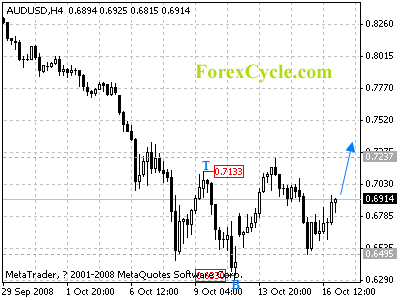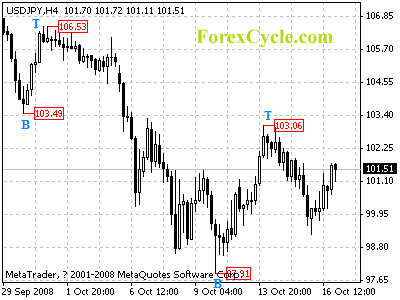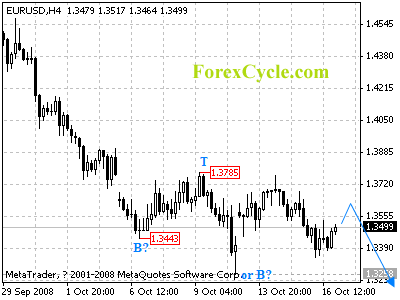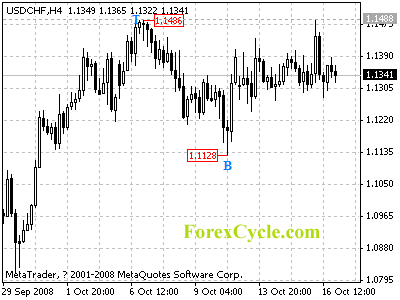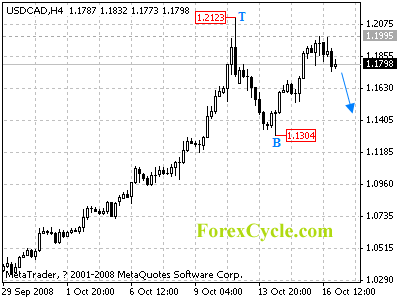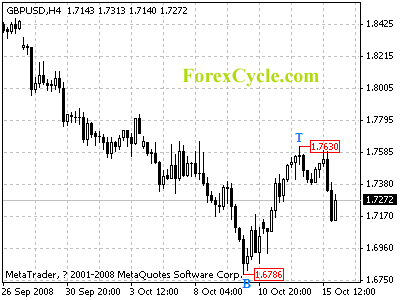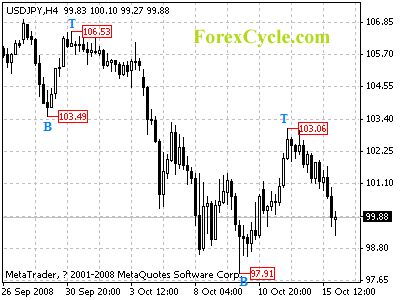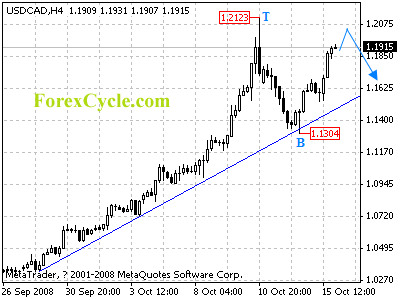When I studied the principles of investing in university, I was taught that the price of a share reflected the value of the company. With fundamental analysis, there are many methods on how one can analyse the financial statements of companies to find out whether a share is a good or a bad investment. You can conduct horizontal and vertical analyses on standardised financial statements, which are just fancy terms for comparing numbers. You can calculate certain financial ratios to get a better understanding of a company's liquidity, working capital management, its ability to remain in business over the long term, and its profitability.
I applied these concepts when I started trading the stock market. Soon I found that if I wanted to trade shares in a timeframe of less than three months, decisions based on these analyses were not useful. I did not want to buy shares only to receive dividends. I wanted to trade for capital gains.
I was dissatisfied with my knowledge, the tools and the methods that I had to trade the markets. With my desire to trade a timeframe shorter than three months and my strengthening belief that emotions greatly impact on trading, I began to search for different approaches to buying and selling shares.
I went back to one of my textbooks in university. I wanted to know how else I could analyse the markets. From the passage I read, I learned that one can analyse the markets in one of two ways: fundamental analysis and technical analysis.
I bumped into a newspaper ad one day for a trading seminar. While reading through the ad I saw the words: technical analysis. An expert trader was going to speak on the exact topic I was interested in learning. It was a free seminar and everybody was welcome to come along. So I called a friend of mine and I asked if he would be interested in attending this trading seminar. He was.
The seminar was organised by a business selling trading courses: courses to instruct people on how to trade the share market. When we arrived, we were led into a small room. There were about thirty people. The spokesman was apparently a veteran trader who wrote two books on trading. Let's call him Bauer for the purpose of this article. Bauer had a very strong presence. He was a huge, tall man with a clean-shaven head.
I was on the front row seat trying to listen and understand every word this man said. It was his teachings that planted the seeds of how I eventually grew as a trader over the years. Many times, I heard his voice in my head, reminding me of the lessons I learnt from his books and the lessons I learnt from him that day. I will try to enumerate the lessons I learnt from this man to help you the way they helped me.
This man had my attention from the very beginning. "The share market is a game where people try to steal money from other people. That is the objective of the game and it is legal", he began. I wondered what the professionals in Wall Street would have thought about that statement if they heard it. I smiled. I liked him already.
He continued: "If you are going to join this game, you are essentially given permission to steal money from other people and in exchange, you are okay with them stealing your money also. Some of the brightest people in the world will be playing with you. Therefore, if you are going to war and fight an army with real weapons, you better make sure you do not go there with a plastic gun."
He said that people rush to the markets to lose their money. It sounded laughable but I guess it was the only conclusion one can draw from the fact that most people begin trading without sufficiently preparing and educating themselves. Of course, most of us do not put on a trade with the hope of losing our money; however, that is what we are effectively doing when we trade without adequate preparation.
"They just cannot wait to lose their money. They do not bother learning about the market first. They think it is easy. Most people know that they need training before they can fly a plane or perform surgery, but I do not know why they think it is easy to make money trading", he exclaimed. He was quite emotional about it.
"Trading is hard", he declared. Only about 5% of people know how to trade profitably. And so the probability of finding someone else who knows what they are doing is very, very small. "Do not rely solely on the advice of your brokers, your fund managers or whoever else. Your best hope for success is to educate yourself. The sooner you do that, the better off you'll be."
"When it comes to buying and selling shares, there is no such thing as investing. What people normally refer to as investing means long-term trading to me". When people hold on to their investments for five or more years with the intention to sell later, then all they are effectively doing is trading:just with a longer time frame.
"Do not buy shares solely for the dividend payments. They offer you measly rewards", he said. "Do trade only with the purpose of making money from capital gains. Buy low, sell high and that's how you should make your profit."
At the time, I was juggling between the concepts of short-term trading or investing for the long-term. I did not know whether I was taking the right approach by attempting to make short-term profits. He made his stance on the matter strongly.
He asked us if we knew what drove prices up or down. Remembering what my lecturer said in university, I responded, "the price moves up and down close to the intrinsic value of the share".
He turned his attention to me and asked, "What share are you trading?"
"XYZ (I changed the name for the purpose of this article)", I replied quite happily. Perhaps I could squeeze a tip or two from him about the stock.
"Do you know what the intrinsic value of XYZ Company is", he asked.
I nodded my head sideways and muttered, "no".
"I'll tell you what the value of XYZ is: it is zero!" He barked.
I was taken aback by his response. Zero? Then what are we paying money for when we buy a share? I thought. Then he clarified himself.
"Price is only a perception — it is people's perception of what they think the value of the share price is".
"The key to success in trading is psychology", he continued. Psychology? I thought. How did psychology get involved in this? "The stock market is like an opinion poll. It is a measure of what people think is going to happen. If they think the price will go up, you will see an upward movement on the chart because there are more buyers so the sellers increase their price because some of these buyers are willing to buy at higher prices", he explained.
He then used an example to explain a typical trader's behaviour when he trades without a system. As he explained it, I recognised my own behaviour in his demonstration.
This was all a revelation for me. When I was buying and selling shares I wondered what type of people were on the other side of the trade because collectively, they were pretty smart. Now I know. It was people like Bauer who were on the other side of those transactions, doing the exact opposite of what I was doing, using similar methods like the ones he was using. They were looking at the share market with a philosophy and an approach that were completely alien to me. Traders like him were making all the money and traders like me were losing.
I shook my head in disbelief that other people saw things the way they did. I felt excited knowing that there was another alternative, another approach in analysing the markets.
"What you need, is to develop your own trading system." He exclaimed to everybody in the entire room. "Without a trading system, you will fail. I guarantee you. This trading system must be something that is suited for you and you only. Even if I give you my trading system I am certain that you will fail to make money, because my system is not designed for you. It is designed for me. That is why you need to learn how to use the tools and acquire the skills needed to be a trader".
I accepted his advice without fully understanding this concept of matching a trading system to suit the trader's own personality. It lingered in my mind for a long time. The wisdom of his advice became apparent to me as I slowly learnt more about the nature of trading.
Bauer diverted our attention to the charts on the screen projected from his laptop. All I saw were lines, curves, rectangular boxes and more squiggly lines. The tools of a professional trader: I thought. I was being shown the tools that my market 'adversaries' have been using to 'clobber' me with all this time. My heart was beating faster than usual. I was in awe. I wanted those tools.
I asked Bauer what program he used to analyse the markets. He told me. I also asked him how many indicators he used. I had read enough about technical analysis by that time to know that technical analysts use indicators to analyse share prices. There are many indicators to choose from so I wanted to know how many of those are used by professional traders. He started counting his fingers. 'Seven', he said.
I think many people there had not really read up on technical analysis but I had done my homework and by that time, I was pretty much the only person in dialog with him, asking him questions. I wanted to gain as much knowledge and wisdom he was willing to give me.
Then I heard one of the most important lessons I've learnt which minimised my losses during my early years of trading: "Trade so small that it is almost a waste of your time. Assume the next trade is going to be the first out of a thousand trades you are going to be making in your life. Even though your profits are smaller, your losses are smaller too. There is no need to rush. Do not worry about getting rich too quickly."
He was suggesting that novices like me should trade using small position sizes. That means to buy small number of shares at the start. I was intrigued. I did not know a person should trade that 'small'.
Eventually, the seminar ended. I grabbed the booklets and brochures given out by some of the staff. In one of these brochures was the name of the program he uses. They were selling the software with the courses they were offering. I could not afford the entire package but I knew I had to buy the same charting software Bauer used. I decided to learn as much as I could about how to use charts and graphs to analyse the market. I needed to develop my own trading system.
As for my friend, he said he had a car loan to take care of first. He would look into trading shares later when he had a little more money to set aside.
A couple of days later, I got a call from the organiser of the seminar, telling me that based from the questions I had been asking that night, I was the type of person that would most benefit from their education package. Bauer was asked to demonstrate the need for trading education because he traded the markets. In the process, he was selling the courses well. Bauer seemed knowledgeable and experienced. He has enlightened me and probably several other people in that room about how much there was to learn. I was sold. I just could not afford the courses at the time but I wanted them so badly that I asked the sales person on the other end of the line if I could work for them in exchange for the course.
I did not get to do the course but I bought the software from a different distributor at a cheaper price. I also bought the two books Bauer wrote. I figured that I could acquire the skills and wisdom through self-education. I learnt a lot from those two books and from using the software. Having that opportunity to attend that seminar was a 'gift from the heavens', as far as I was concerned. Wherever you are, Bauer, I thank you. You — and others like you -- have made me recognize the value of passing on knowledge and experience for others to follow.
About The Author:
Marquez Comelab is the author of the book: The Part-Time Currency Trader. It is a guide for men and women interested in trading currencies in the forex market. Discusses analysis, tools, indicators, trading systems, strategies, discipline and psychology. See: http://marquezcomelab.com. His other articles are also published at http://thefreedomtochoose.com along with other helpful articles.








